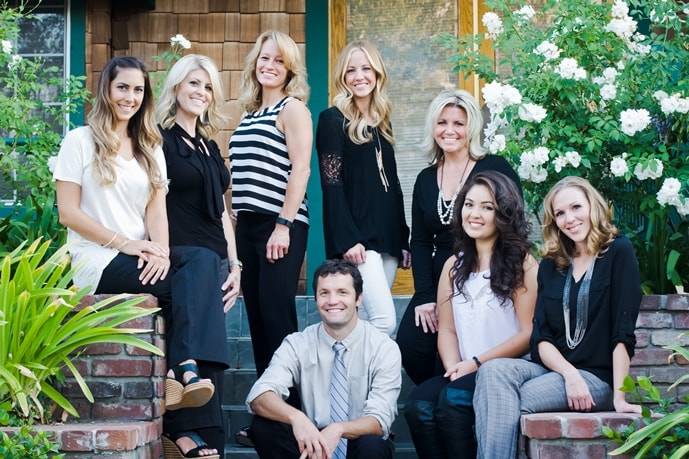Dentists go to Anaheim
We recently attended the California Dental Associations annual Scientific Convention in Anaheim, CA. This convention features advanced training courses from the top researchers and dentists around the country. Dr Skidmore and his team attended and learned about new techniques and materials to improve dentistry in Temecula.
We attended a course in periodontics (gum treatment) and our Hygienist, Jenn, is always on the cutting edge of gum treatments. Dentists in Temecula often overlook gum disease and treatments because they are long and tedious. But in our Temecula dentist office, each patient has a very thorough cleaning. Each patient is scheduled for a full hour! Its not like the 5-10 minute cleanings that occur in some Temecula, Murrieta or Menifee dentist offices.
We also attended a TMJ class. The TMJ is on of the most difficult joints in the body to treat. But our Temecula dentist, Dr Skidmore now has the Aqualizer which is an aid in TMD diagnosis. Read below for more information on TMJ/TMD, but first check out our pictures from the convention:
Oh, ya, and we met WAYNE GRETZKY!! Here is Jasmine, our RDA with him!
Temporomandibular disorders (TMJ / TMD) occur as a result of problems with the jaw, jaw joint and surrounding facial muscles that control chewing and moving the jaw.
What Is the Temporomandibular Joint?
The temporomandibular joint is the hinge joint that connects the lower jaw (mandible) to the temporal bone of the skull, which is immediately in front of the ear on each side of your head. The joints are flexible, allowing the jaw to move smoothly up and down and side to side and enabling you to talk, chew, and yawn. Muscles attached to and surrounding the jaw joint control its position and movement.
What Causes TMJ / TMD?
The cause of TMJ / TMD is not clear, but dentists believe that symptoms arise from problems with the muscles of the jaw or with the parts of the joint itself.
Injury to the jaw, temporomandibular joint, or muscles of the head and neck – such as from a heavy blow or whiplash – can cause TMJ / TMD. Other possible causes include:
• Grinding or clenching the teeth, which puts a lot of pressure on the TMJ
• Dislocation of the soft cushion or disc between the ball and socket
• Presence of osteoarthritis or rheumatoid arthritis in the TMJ
• Stress, which can cause a person to tighten facial and jaw muscles or clench the teeth
What Are the Symptoms of TMJ / TMD?
People with TMJ / TMD can experience severe pain and discomfort that can be temporary or last for many years. More women than men experience TMJ / TMD and TMJ / TMD is seen most commonly in people between the ages of 20 and 40.
Common symptoms of TMJ / TMD include:
• Pain or tenderness in the face, jaw joint area, neck and shoulders, and in or around the ear when you chew, speak or open your mouth wide
• Limited ability to open the mouth very wide
• Jaws that get stuck or lock in the open- or closed-mouth position
• Clicking, popping, or grating sounds in the jaw joint when opening or closing the mouth (which may or may not be accompanied by pain)
• A tired feeling in the face
• Difficulty chewing or a sudden uncomfortable bite – as if the upper and lower teeth are not fitting together properly
• Swelling on the side of the face
Other common symptoms include toothaches, headaches, neck aches, dizziness, and earaches and hearing problems.
How Is TMJ / TMD Diagnosed?
Because many other conditions can cause similar symptoms – including a toothache, sinus problems, arthritis, or gum disease – your dentist will conduct a careful patient history and clinical examination to determine the cause of your symptoms.
Dr. Robinson will examine your temporomandibular joints for pain or tenderness; listen for clicking, popping or grating sounds during jaw movement; look for limited motion or locking of the jaw while opening or closing the mouth; and examine bite and facial muscle function. Sometimes panoramic x-rays will be taken. These full face x-rays allow Dr. Robinson to view the entire jaws, TMJ, and teeth to make sure other problems aren’t causing the symptoms. Sometimes other imaging tests, such as magnetic resonance imaging (MRI) or a computer tomography (CT), are needed. The MRI views the soft tissue such as the TMJ disc to see if it is in the proper position as the jaw moves. A CT scan helps view the bony detail of the joint.
Dr. Jeffrey Robinson may decide to send you to an oral surgeon (also called an oral and maxillofacial surgeon) for further care and treatment. This oral healthcare professional specializes in surgical procedures in and about the entire face, mouth and jaw area.




